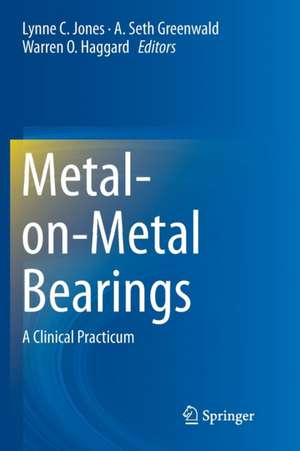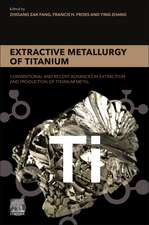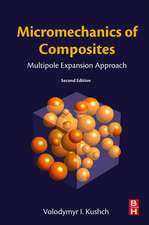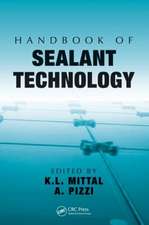Metal-on-Metal Bearings: A Clinical Practicum
Editat de Lynne C. Jones, Warren O. Haggard, A. Seth Greenwalden Limba Engleză Paperback – 23 aug 2016
| Toate formatele și edițiile | Preț | Express |
|---|---|---|
| Paperback (1) | 636.30 lei 6-8 săpt. | |
| Springer – 23 aug 2016 | 636.30 lei 6-8 săpt. | |
| Hardback (1) | 644.95 lei 6-8 săpt. | |
| Springer – 30 oct 2013 | 644.95 lei 6-8 săpt. |
Preț: 636.30 lei
Preț vechi: 748.59 lei
-15% Nou
Puncte Express: 954
Preț estimativ în valută:
121.77€ • 126.66$ • 100.53£
121.77€ • 126.66$ • 100.53£
Carte tipărită la comandă
Livrare economică 15-29 aprilie
Preluare comenzi: 021 569.72.76
Specificații
ISBN-13: 9781493946075
ISBN-10: 1493946072
Pagini: 212
Ilustrații: X, 200 p. 46 illus., 26 illus. in color.
Dimensiuni: 155 x 235 x 11 mm
Greutate: 0.3 kg
Ediția:Softcover reprint of the original 1st ed. 2014
Editura: Springer
Colecția Springer
Locul publicării:New York, NY, United States
ISBN-10: 1493946072
Pagini: 212
Ilustrații: X, 200 p. 46 illus., 26 illus. in color.
Dimensiuni: 155 x 235 x 11 mm
Greutate: 0.3 kg
Ediția:Softcover reprint of the original 1st ed. 2014
Editura: Springer
Colecția Springer
Locul publicării:New York, NY, United States
Cuprins
Preface.- Part I: Introduction.- Chapter 1: Overview of Metal-on-Metal Implants.- Chapter 2: Bearing Surfaces for Joint Replacement: New Materials or New Problems?.- Part II: Clinical.- Chapter 3: Outcome Studies for Metal-on-Metal Bearings: What Evidence-Based Medicine Tells Us.- Chapter 4: Metal Reactivity: Its Influence on Primary and Revision Outcomes.- Chapter 5: Are metal ion levels a trigger for surgical intervention?.- Chapter 6: Metal Sensitivity: Is it possible to Determine Clinically?.- Part III: Biology.- Chapter 7: Wound healing, chronic inflammation, and immune responses.- Chapter 8: Benign Responses to Orthopaedic Implants: Really?.- Chapter 9: What does the Histology Tell Us?.- Part IV: Biomechanics.- Chapter 10: Why metal-on-metal -what laboratory tests have shown us.- Chapter 11: What do the Retrievals really tell us?.- Future Directions.- Index.
Textul de pe ultima copertă
This book addresses the background and significance of the factors potentially influencing the clinical and biological outcomes of metal-on-metal hip implants. Metal-on-metal bearings were introduced and evaluated as an alternative to other bearing couples, particularly metal-on-polyethylene, due to their enhanced wear resistance as determined in laboratory testing. Initially, reports of short-term clinical outcomes were favorable and an increasing number of metal-on-metal prostheses were implanted. Subsequently, isolated case findings describing adverse tissue responses around the articulation became the harbinger of an increasing number of reports describing pseudotumors and other significant lymphocytic-based responses associated with metal-on-metal prostheses. Questions have been raised as to whether this is an implant, design, or patient-specific response. The reasons why some patients have a negative biological response and pathology while others do not remain to be determined, but tens of thousands of patients in the US, the UK, and around the world are considered to be at risk. Leading researchers and clinicians describe the issues related to the nature of the biological and pathological responses and the protocols that should be followed to determine if an adverse response is occurring. This book is essential reading for researchers, engineers, and orthopaedic surgeons who are involved in the design, evaluation, and implantation of metal-on-metal prostheses.
- Presents an historical overview of the use of metal-on-metal articulations
- Collects for the first time the information necessary to assess clinically and biologically relevant patient outcomes
- Addresses the practical questions that are being raised by surgeons, researchers, and engineers
- Features contributions by acknowledged leaders in their fields
- Describes what the clinician needs to know in order to practice evidence-based medicine
- Projects directions for clinical, biological, and biomechanical research efforts
Caracteristici
Presents an historical overview of the use of metal-on-metal articulations Collects for the first time the information necessary to assess clinically and biologically relevant patient outcomes Addresses the practical questions that are being raised by surgeons, researchers, and engineers Features contributions by acknowledged leaders in their fields Describes what the clinician needs to know in order to practice evidence-based medicine Projects directions for clinical, biological, and biomechanical research efforts Includes supplementary material: sn.pub/extras

























